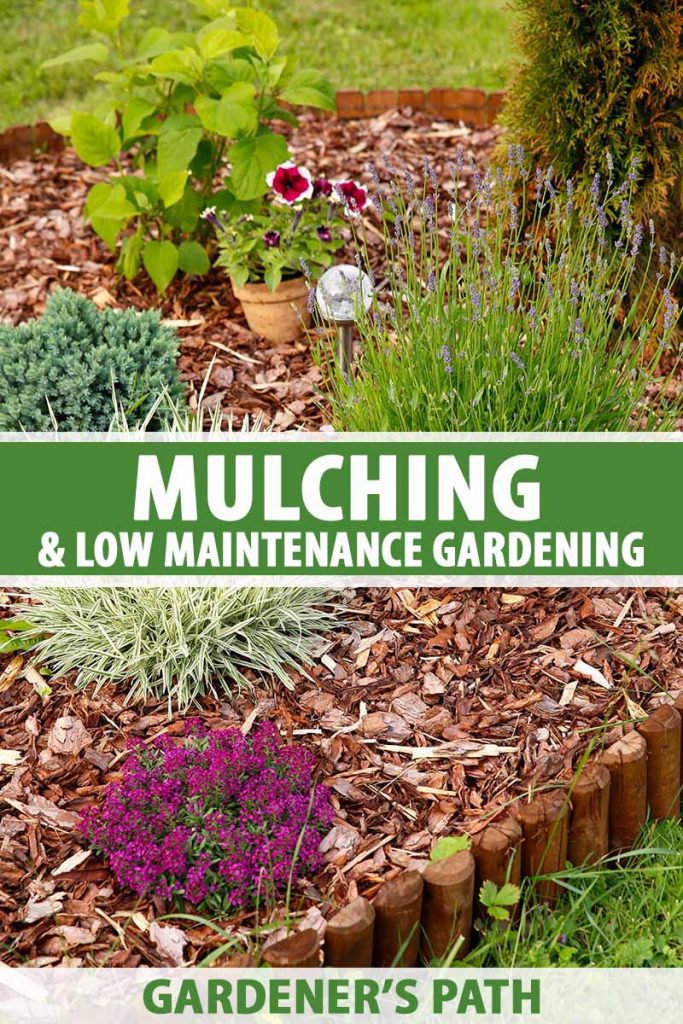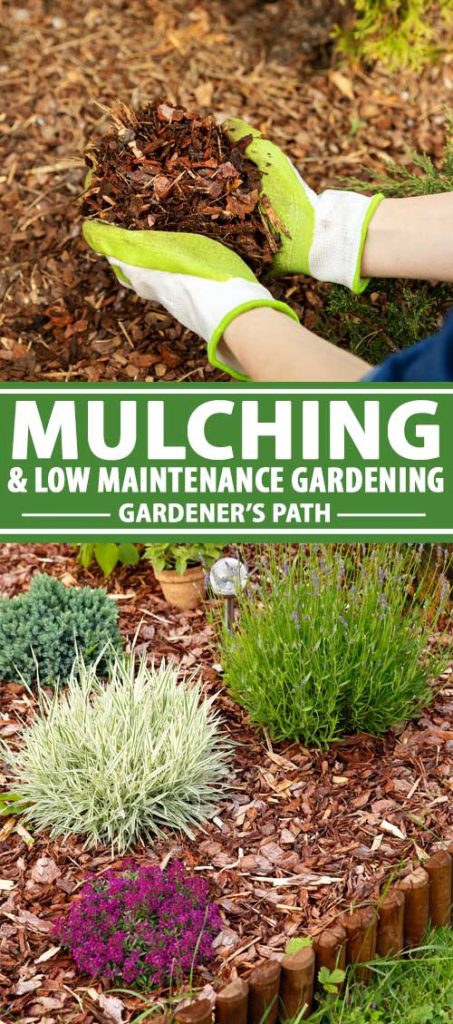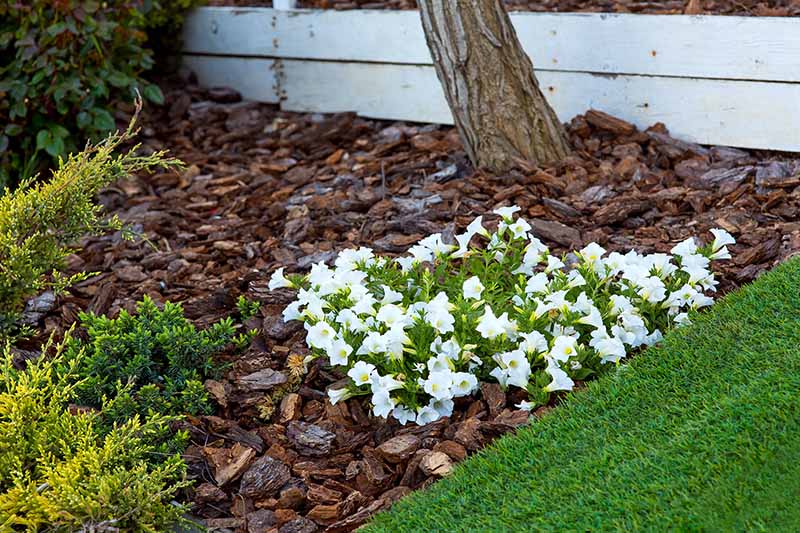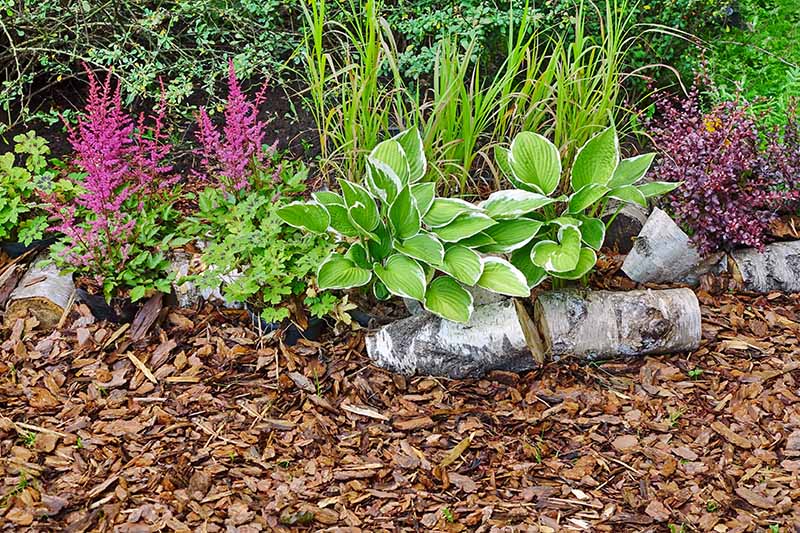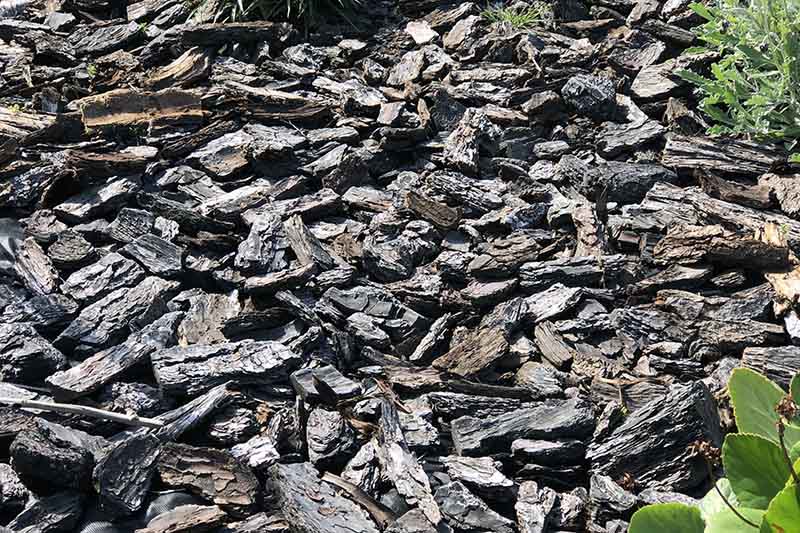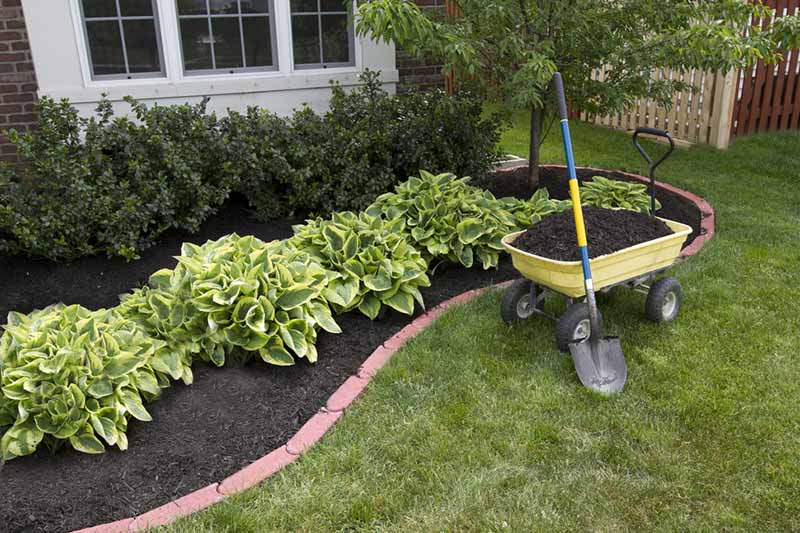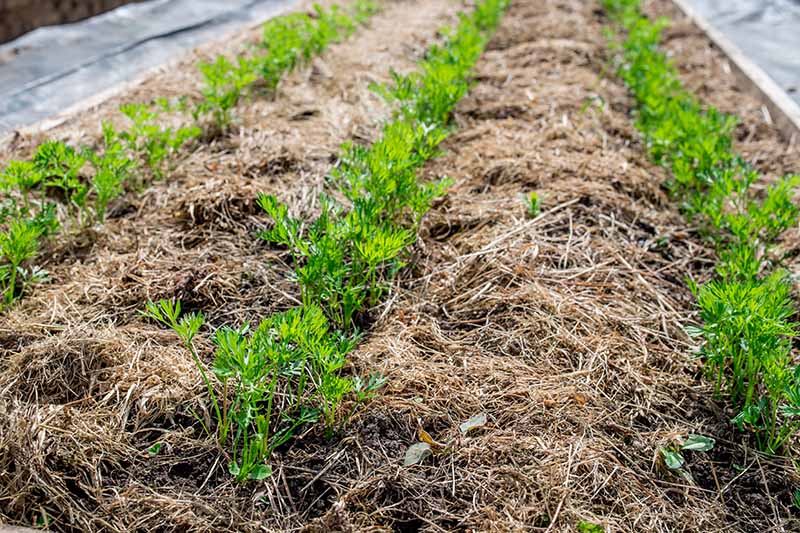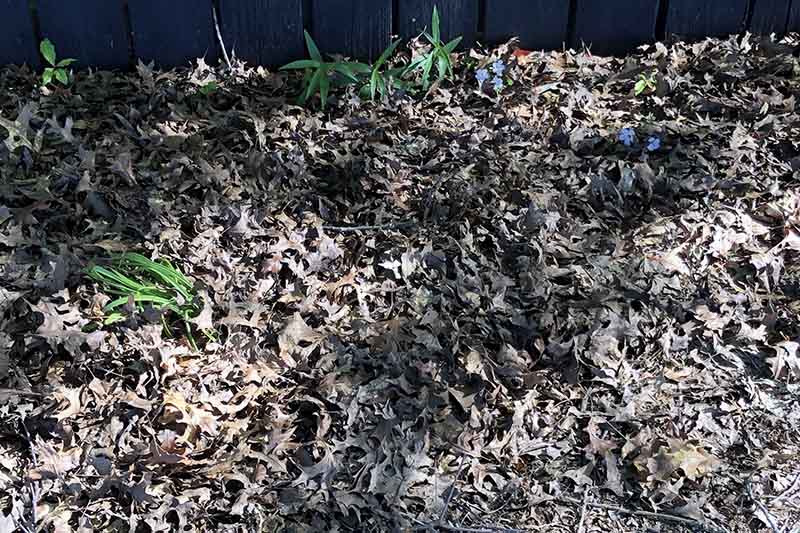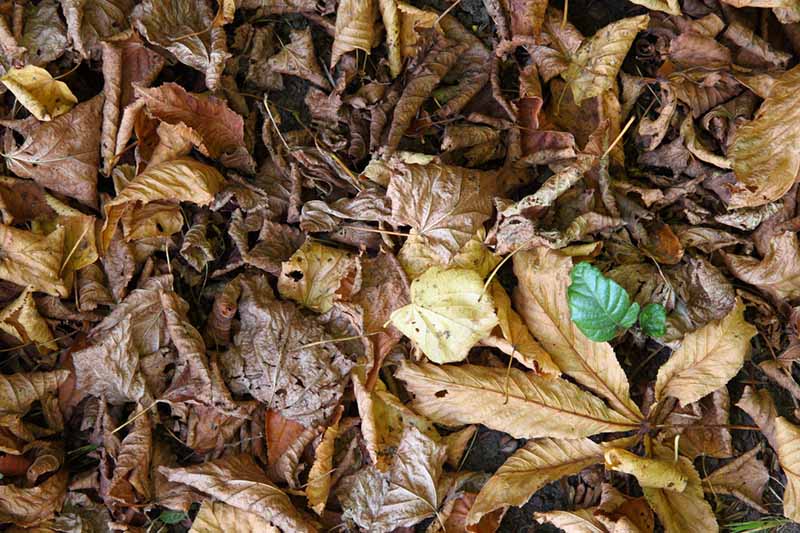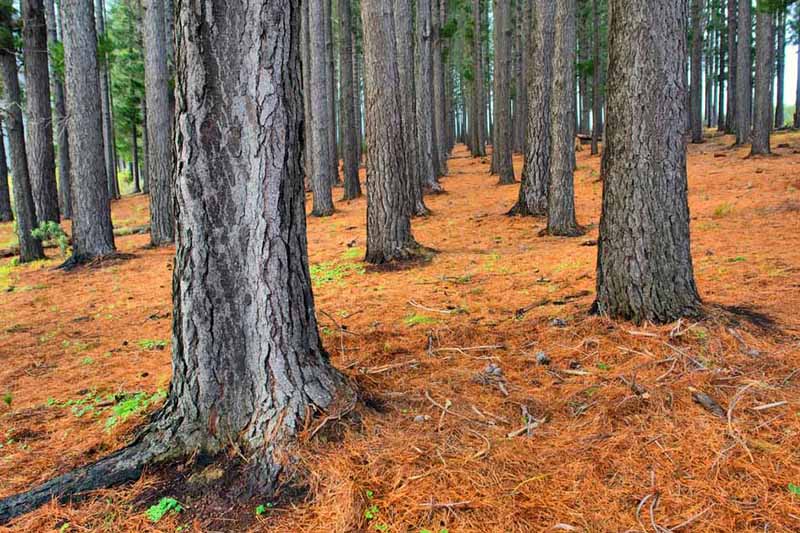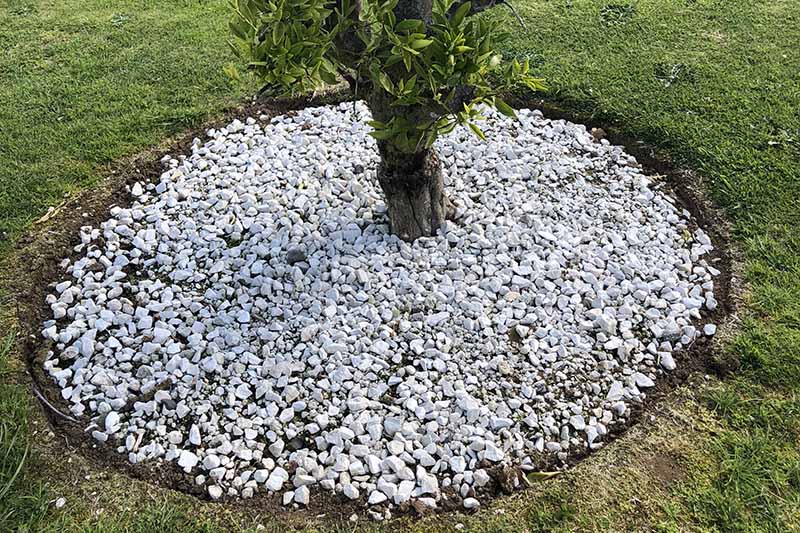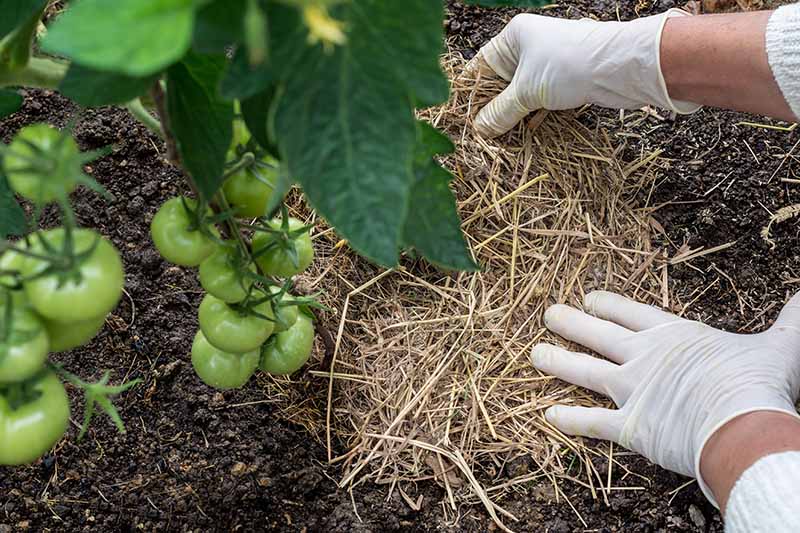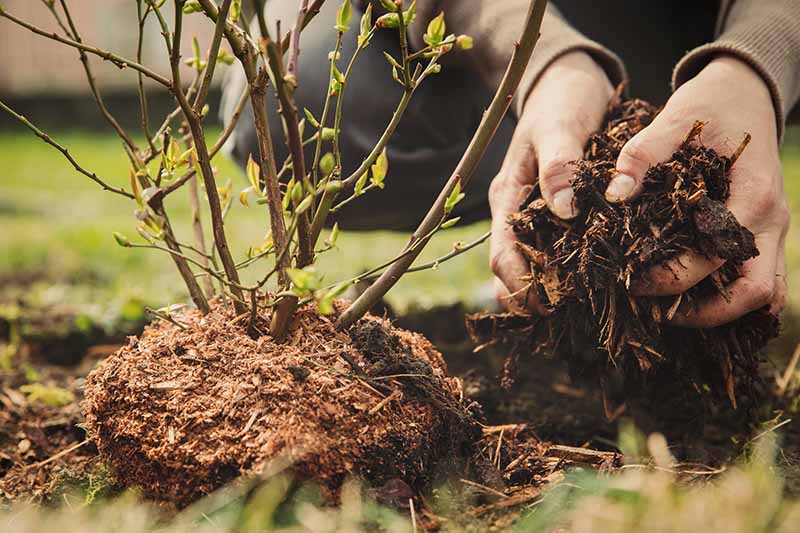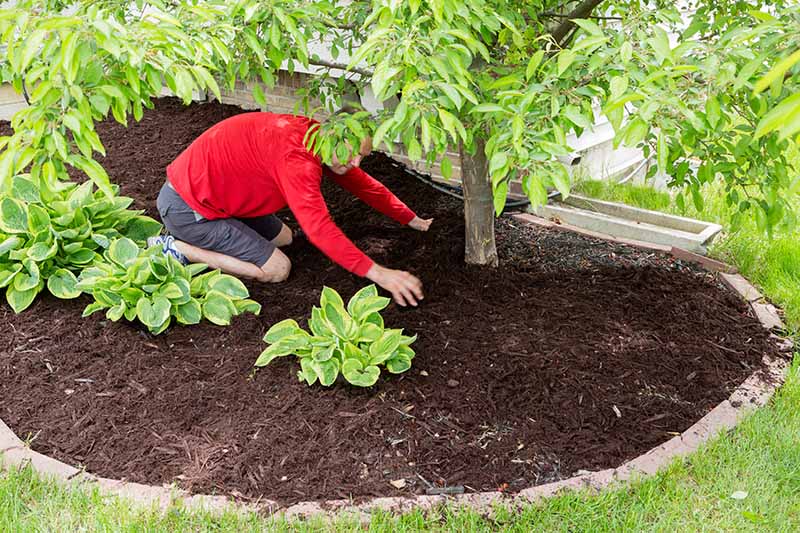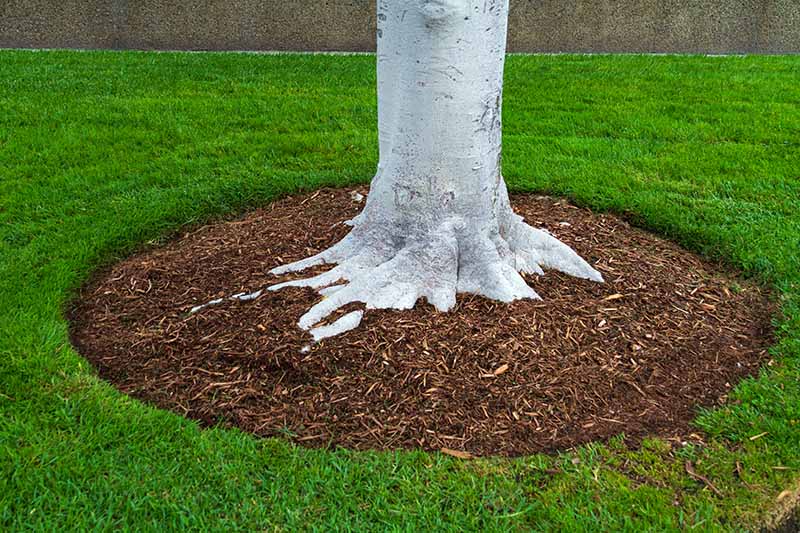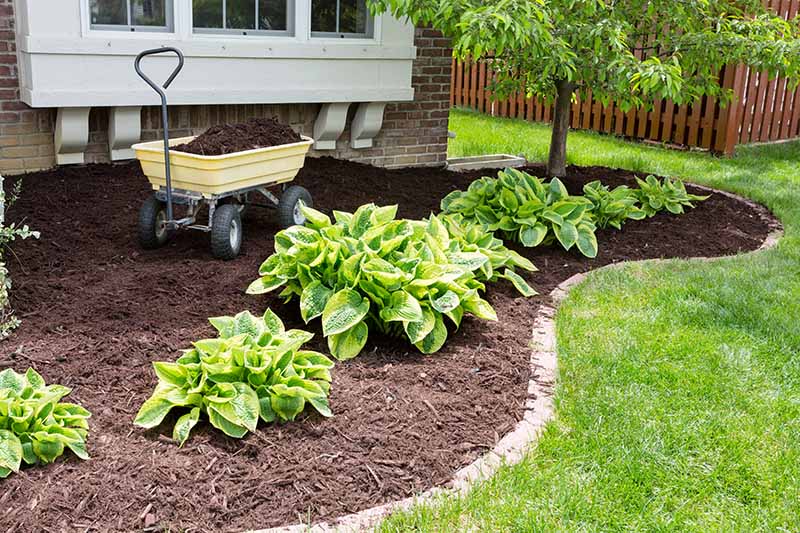From borders to vegetable gardens, my neighbors never seemed to suffer the problems that I did. Messy, weedy vegetable patch, borders a little tatty. It’s ”permaculture,” I used to say. But it’s not. It’s simply that I don’t have time to invest in making my garden prettier. Until I discovered mulching. We link to vendors to help you find relevant products. If you buy from one of our links, we may earn a commission. Turns out, mulching doesn’t just make your garden easier on the eye – and less of a strain on the back – but it brings a host of other benefits as well. There are several methods of mulching, and gardening books and experts suggest a variety of options, depending on your needs. There’s also a fair bit of disagreement as to what’s best.
The consistent theme is to cover the surface of the soil around your plants with a layer of material, and to apply this material to the right depth. Natural materials will eventually decompose, adding organic matter and nourishing the soil beneath. Mulch can also be applied to bare soil, if you’re not ready to plant just yet.
The Value of Mulching
Everyone loves a weed-free garden, and a layer of mulch works by preventing the weed seeds from germinating, blocking their light, and smothering them if they do manage to sprout. Depending on the material you choose to use, there are many benefits over and above just preventing weeds from taking hold.
Soil Moisture and Erosion
Texas A&M reports that mulching, a long established horticultural practice, is beneficial because it prevents erosion, especially on sloping beds or furrowed rows. In especially arid or rainy climates, erosion is a common issue.
An organic or other porous material placed around the base of the plants – or on bare earth – will allow water to percolate into the soil, instead of running off the surface and taking a layer of your precious topsoil with it. It will also help the soil retain that precious moisture.
This is especially important in arid climates, where soil tends to dry out easily. In hot weather, a layer of mulch can prevent evaporation, reducing the need for supplemental irrigation, and cutting down on high water bills. Additionally, having fewer weeds competing for moisture will mean more of it is available for your crops.
Soil Temperature
Another important aspect of mulching is the effect on soil temperature. Extreme soil temperatures can put unnecessary stress on plants, making them weak and vulnerable to pests and disease. Mulching helps to regulate soil temperature, keeping it constant, and less prone to fluctuation. According to a study by Edyta Kosterna, published by the Polish Society for Horticulture in 2014, placing a layer of straw mulch over the soil around tomato plants showed a significant reduction of daily temperature fluctuations of the soil, and concluded that mulching increased the total yield of fruits.
Enrich and Nourish
Depending on what you use, mulch can help to regulate soil pH, add nutrients, and increase the fertility of your soil over time. By using natural materials that gradually decompose, it can help to aerate the soil and prevent it from becoming compacted, improving texture.
Materials
Broadly speaking, materials used for mulching fall into two categories: organic and inorganic. Organic mulches are natural materials that will gradually decompose and improve the condition of the soil. Inorganic materials, used primarily for weed blocking, are non-biodegradable and can look very decorative in borders and containers, improving the appearance of your garden. The Natural Resources Conservation Service (NRCS, a part of the USDA) offers some suggestions.
The NRCS doesn’t come right out and say not to use inorganic sources such as plastics or landscaping material. Rather, the organization points out that inorganic mulches lack the soil-improving properties of organic varieties, and can actually hinder growth by preventing air circulation. They can also be difficult to remove if you need to change them, or if they no longer serve their purpose. Organic mulches improve the condition of the soil as they decompose. By providing additional nutrients, aeration, pH balance, and moisture retention, organic mulch does so much more than just blocking weeds. Some popular materials to use for mulching include:
Bark
Bark can create a pleasing look in your established borders and under trees. It comes in a variety of different sizes and colors, from coarse-cut pine bark nuggets to finely shredded hardwood. The coarser the cut, the longer it will take to decay, so you won’t need to top it up too often. It keeps the weeds in check, and prevents water evaporation and runoff. Shredded or finely chopped bark will break down more quickly, adding organic matter to the soil. While the US Department of Forestry says that it has no specific value as a fertilizer, bark is a very good soil conditioner, conserving moisture and reducing erosion. Some gardeners are concerned about the use of bark – and wood chips – on the basis that they deplete nitrogen from the soil as they decompose. Wood-based mulches have a high carbon-to-nitrogen ratio, and the fear is that the microbes responsible for breaking it down will tie up nitrogen in the soil. Both the US Department of Forestry and Texas A&M are of a different opinion. The only time that nitrogen depletion might be an issue is if the material were to be dug in and incorporated into the soil, before it has time to decompose. By placing the mulch on top of the soil, nitrogen depletion is not an issue. You can also find bark that’s been dyed to a uniform color. According to Ron Kujawski at the Center for Agriculture, Food, and the Environment at the University of Massachusetts Amherst, these dyes are not considered toxic. But my own preference would be to use avoid using dyed materials in areas where I’m growing edible crops, or to avoid them altogether. Bark will usually need to be reapplied every 2-3 years, depending on the size of the chips.
Compost
This is my favorite option. Composted organic material is the best thing you can use to mulch your soil. The organic matter has already broken down, and it will release nutrients into the soil readily. Just make sure the compost is well rotted, so it doesn’t contain viable weed seeds. Dig from the bottom of your compost pile, or buy it in bags from a garden center.
If you’ve got fresh manure on your compost pile, don’t use this as mulch until it’s well rotted. Fresh manure, particularly that of chickens, can burn plants, doing more harm than good. Besides, it doesn’t make for a very pleasant smelling mulch. Dark, earthy compost gives a tidy finish to any border, and can also be used underneath other mulching materials if you like.
Grass Clippings
Ah, summer, filled with the smell of freshly mowed grass. But can you mulch with grass clippings?
You can! And they provide a good source of nitrogen to the soil as they decompose. Grass clippings need a bit more attention, depending on the area where you live and the variety of lawn you have. Use grass clippings lightly, and only use those that have not been treated with chemical pesticides or herbicides. Thick layers have a tendency to become compacted and matted, creating a slimy mess in the garden. To avoid this, apply a thin layer of dry lawn clippings and add to it every few weeks. If you’ve got a very weedy lawn, then it’s better to compost the clippings first, to prevent introducing new weed seeds into your borders that are ready to sprout.
Leaves and Leaf Mold
Fresh or shredded leaves make a good mulching material for perennial beds and vegetable gardens. Not as decorative or neat as bark, they’ll break down quite quickly and add nutrients to the soil. The forest floor demonstrates how nature provides its own all-in-one mulch and compost in the form of fall leaves, which turn into leaf mold. In the home garden, leaf mold is a type of chopped, partially composted leaf matter. It provides an excellent soil amendment. You can make it easily at home, by raking fall leaves into a pile after running the lawnmower over them to shred them, then covering with a tarp to keep them moist, and leaving them in place for a year to decompose. Underneath, you’ll find a rich, brown leafy material perfect for mulching your garden.
If you don’t have the space, this can also be done in plastic trash bags in the garage. On the other hand, if you’re gardening in a large space with lots of deciduous trees, a wood chipper can come in handy for shredding an abundance of leaves. If you use leaves and leaf mold, keep an eye out for snails and slugs. These like to hide in the cool dark of leaf mulch during the day, coming out at night to nibble on your tomatoes and lettuce. Keep in mind: they may like to shelter in other types of mulch as well. Read more about turning fall leaves into compost here.
Newspaper
We’ve all got newspaper lying around, haven’t we? Let’s put it to good use in the garden! Layers of newspaper can be used as a natural base underneath bark or decorative gravel. It provides an additional layer of weed control, and newsprint eventually breaks down, adding organic matter to the soil. Shredded, it can be used on its own. But note that it will decompose quite quickly and isn’t particularly decorative, as it tends to get clumpy when wet. You can use newspaper in existing beds as well as on bare soil or fallow garden beds. It’s often used as part of the practice known as lasagna gardening, to add a carbon layer.
Pine Needles
Pine needles are an excellent mulch for blueberries, rhododendrons, or other ericaceous plants that thrive in acidic conditions.
If you can find a source of fresh pine needles, it’s recommended that you partially compost them before laying them on your garden beds. This will remove some of the excess acidity present in the fresh leaves.
Sawdust
If you have a local source of sawdust available, it’s best to partially compost it before using it as mulch in the garden. In the early stages of decomposition it can potentially contribute to soil acidity, as it has a very high carbon-to-nitrogen ratio. Mixing with some well-rotted manure will create a nutrient rich, decorative mulch. Be careful about laying it on too thick, as it tends to get hard and form a crust on the surface, preventing moisture from reaching the soil. Sawdust will decompose faster than bark or wood chips, and you’ll either need to top it up or replace it at the end of the season. Only use sawdust gleaned from untreated timber, as treated wood can contain toxic substances such as copper chrome arsenate (CCA).
Stones and Decorative Gravel
Landscaping with rocks can certainly add curb appeal. From large river rocks and pretty pebbles, to shingles and stone chips, they can provide a practical and appealing finish. As they are not biodegradable (not quickly, at least), they won’t offer any of the soil improvement advantages of organic, biodegradable materials. But they will suppress weeds and conserve moisture. They also won’t need to be replaced or replenished; rocks can last a lifetime. I like to use stones in narrow borders running along a fence line or containers on the patio, as it can get expensive – and heavy – to use them in large areas. Adding a layer of newspaper underneath is a good idea, as some persistent weeds may start sprouting in between the rocks or stones.
Straw and Hay
Commonly used on or around vegetable crops, hay and straw are lightweight materials, often applied for overwintering as they don’t damage the plants. A layer of straw or hay is useful if you’re growing trailing plants, such as strawberries or melons, as it keeps the developing fruit off the soil surface.
Straw mulch insulates very well, and it is easy to spread, giving a pleasing result. The main problem is that it also tends to blow away easily on windy days, and doesn’t retain moisture very well. This can be overcome by partially composting or mixing in a bit of well-rotted compost. Hay, being a mixture of different grasses, adds nutrients to the soil as it decomposes, and holds moisture much better than straw.
The only caveat is that you will need to watch out for grass seeds. If it’s produced properly, hay will be cut before it’s gone to seed. Check for obvious seed heads before spreading it on your garden. Unfortunately, hay and straw can be a happy nesting spot for local rodents, providing a convenient “bed” while they “breakfast” on your vegetables. Read more about mulching with straw here.
Wood Chips
Wood chip mulch can either be made from recycled wood and off-cuts from timber yards, or from a felled tree by putting it through a shredding machine. A cheap – often free – way of acquiring some wood chips is to contact your local arborist. Expert tree pruners often have too much excess, and are happy to give it away. As with bark, the coarser the chip, the longer it’ll take to break down. According to Dr. Leonard Perry at the University of Vermont’s Department of Plant and Soil Science, arborist wood chip mulch is one of the best types available for retaining moisture, maintaining even soil temperatures, and suppressing weeds. It’s also one of the best in terms of environmental sustainability. This is because it contains bark, wood, and leaves from the tree, and as each of these breaks down, they provide nutrients to the soil. Using wood chips can attract beneficial mycorrhizal fungi, decomposing the organic matter into a fungal-dominant soil. It’s ideal for use in orchards, around trees, and for woody shrubs that need a fungal soil to thrive. Easy to use, wood chips are an effective weed blocker and, like bark, they provide a natural, tidy appearance.
The Process of Mulching
The best times to apply mulch are in spring – or early summer – and fall, though this will depend on where you live. According to the Royal Horticultural Society, you want to avoid applying mulch in summer if the soil has already dried out, or too early in the spring if the soil is frozen. Winter mulching to protect cold tolerant plants is done in mid- to late fall.
There are some things you need to keep in mind before you begin. Take the time to conduct a soil test to determine the pH of your soil, and select your material accordingly. For example, you don’t want to add acidic material, such as pine needles, to soil that is already acidic, unless you are growing rhododendrons, blueberries, or some other acid-loving plant. Take the time to weed the area thoroughly – watch for runners of grass roots, and get rid of them. Cultivate the soil and apply any amendments, such as compost, if needed. If you are mulching around existing plantings, be careful not to disturb roots, or damage plants. Now is a good time to tidy up the edges of your borders, for a neat and orderly appearance.
Before you start, rake the soil so that it’s even, not mounding in certain areas. Water well, making sure the soil is moist (but not waterlogged!) before applying your material. Most biodegradable mulches need to be applied 2-3 inches thick to be effective. Grass clippings, as mentioned, should be applied in thin layers, to prevent it from rotting and creating a slimy mat. Trees and larger shrubs should be mulched to the drip line – this is the widest part of the tree canopy, the point on the ground where water will drip from the widest branch. When you apply your mulching material – except in the case of winter mulching for cold protection – it’s important that the mulch does not make contact with the stem or tree trunk.
If mulch is applied too closely around plants, added moisture buildup can cause stems and trunks to rot, putting them at risk of contracting fungal or bacterial infections. Avoid creating a “volcano” shape around trees, and keep the material at least 2-3 inches away from the base of plants. One of the biggest and most often repeated mistakes among gardeners is failure to mulch deeply enough. Leaving bare patches that allow weeds to take hold is a close second. Remember that mulch will naturally settle, so be generous in your application.
Weeds Be Gone
Last year, I used some wood chips that I was able to get from a local arborist who was felling trees in a public park. My water bill showed a measurable drop, and I have spent a lot less time weeding the garden, and more time enjoying it.
If you mulch, your plants will thank you. And you will thank yourself when you are sitting outside on the garden bench, enjoying a glass of iced tea and writing your garden journal, instead of pulling up weeds. If you want to find out more about how to improve your soil, visit these guides next:
Using Borage as a Cover Crop and for Green Manure The Benefits of Using Soil Inoculants and Microbes in the Garden Understanding the Soil in Your Own Backyard
Photos by Clare Groom © Ask the Experts, LLC. ALL RIGHTS RESERVED. See our TOS for more details. Uncredited photos: Shutterstock. Originally published on August 31, 2014. Last updated May 2, 2020. With additional writing and editing by Allison Sidhu.
